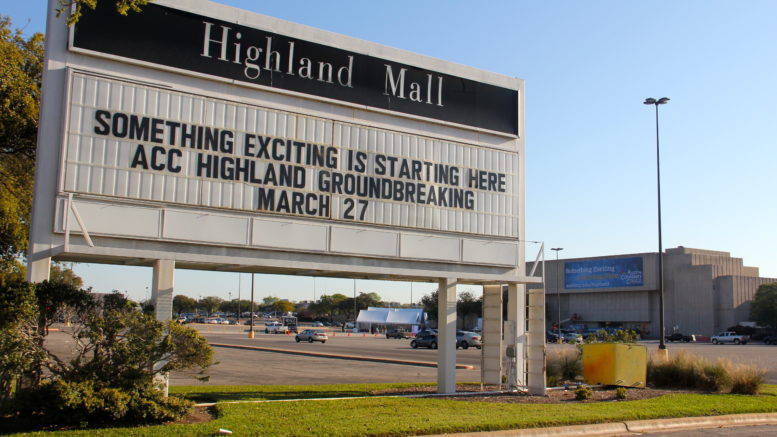From the Austin Community College (ACC) District’s six-story central office building in the Highland neighborhood of Austin, Texas, college leaders had a good view of the nearby Highland Mall.
They watched closely while this once-active facility gradually declined as its anchor stores left for brand-new shopping centers in the suburbs, resulting in a largely abandoned 81-acre eyesore near the heart of the city.
“When a mall of that size becomes blighted, it tends to create a circular effect on the entire community,” ACC President Richard Rhodes says. “You start to see graffiti and gang activity until the area is redeveloped.”
Editor’s note: This excerpt comes from the summer edition of Learning by Design, the magazine of the Society for College and University Planning. The article was done in partnership with the American Association of Community Colleges.
By buying the property and converting the mall space into a new campus center, college leaders realized they could accomplish two significant goals at once: They would expand their presence in downtown Austin while breathing new life into the community.
What’s more, the property was on a stop for the Metro Rail system, and close to the University of Texas at Austin and downtown. ACC partnered with a private developer, and four years and $41 million later after the final purchase was made, ACC leaders hired an architect to design the site’s master plan.
Put to good use
Phase one of the project transformed the former JC Penney store into a high-tech center for developmental math instruction called the ACCelerator, which opened in fall 2014. Construction for Phase two began during the 2016–17 school year, to include a student-run restaurant, a Workforce Innovation Center, and a healthcare simulation lab, among other learning spaces.
ACC’s Highland campus is just one example of how community colleges have purchased and retrofitted existing facilities in their communities to meet local needs. Other examples include Manchester Community College in Connecticut, which converted a local bank into an arts and education center, and Luzerne County Community College in Pennsylvania, which turned a vacant bank into a new learning center.
By purchasing abandoned facilities and transforming them into vibrant hubs for culture and education, community colleges are fulfilling one of their key missions: revitalizing their communities. But these types of projects can be fraught with challenges as well. Here’s how Austin Community College navigated these challenges successfully.

